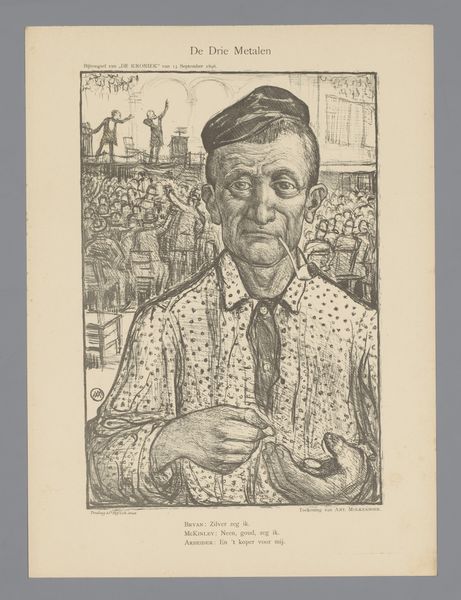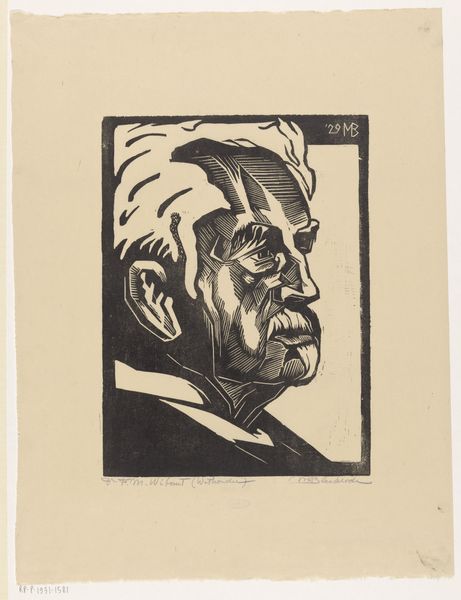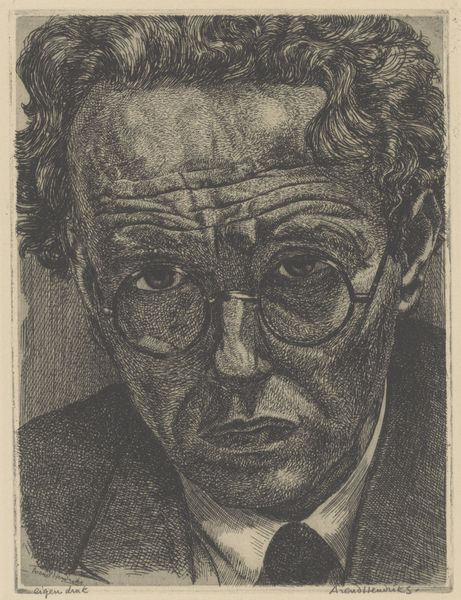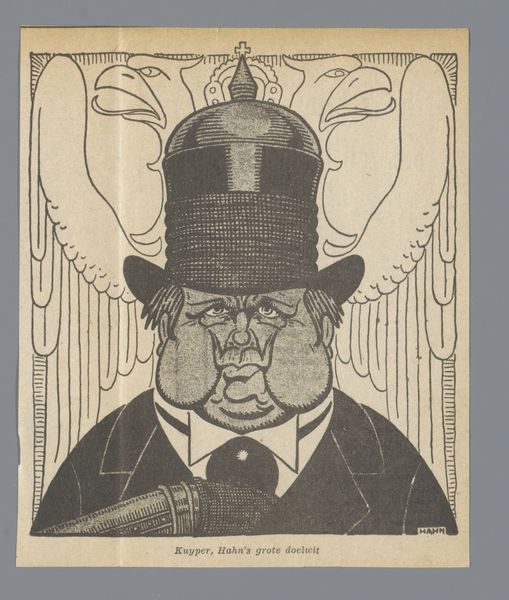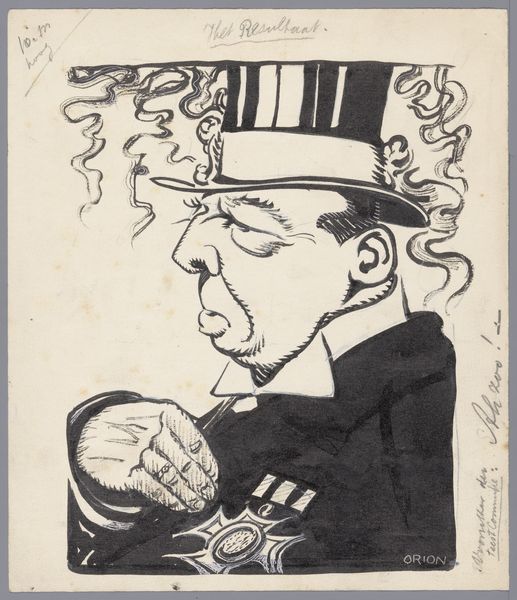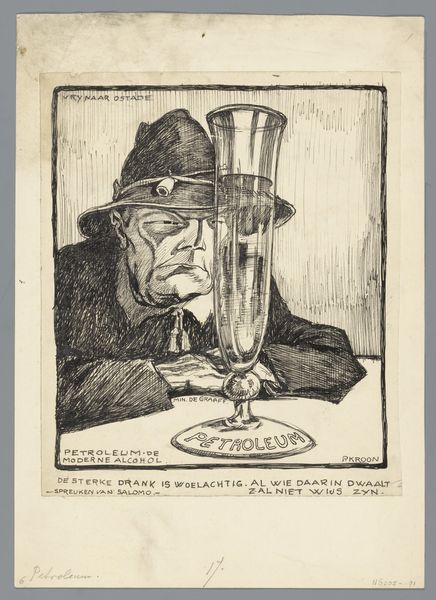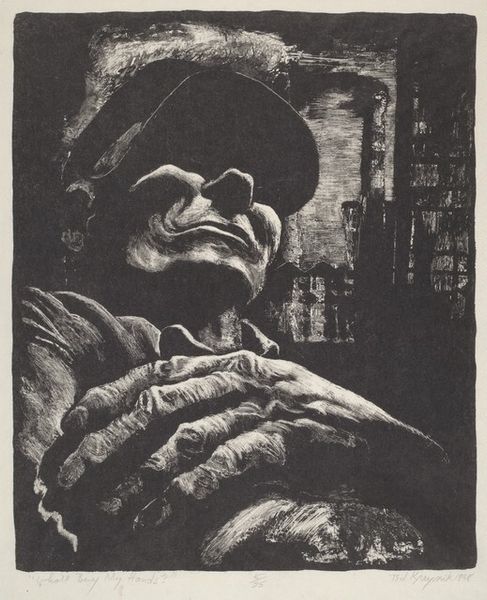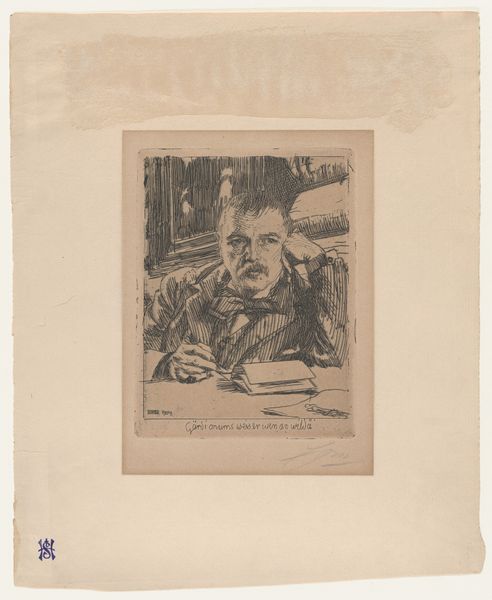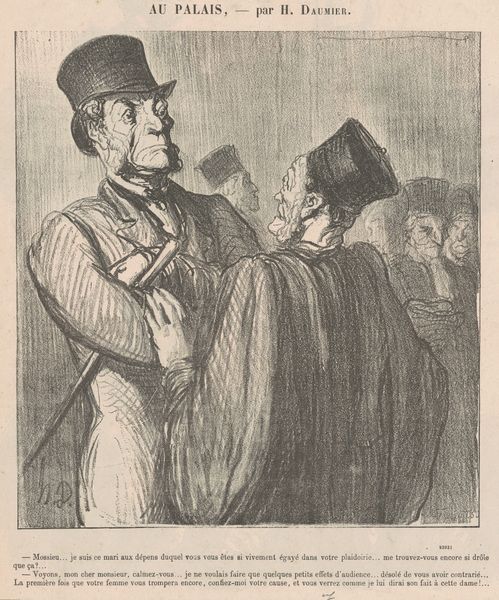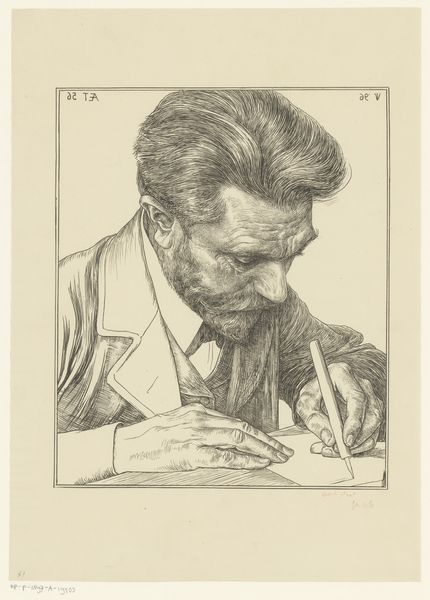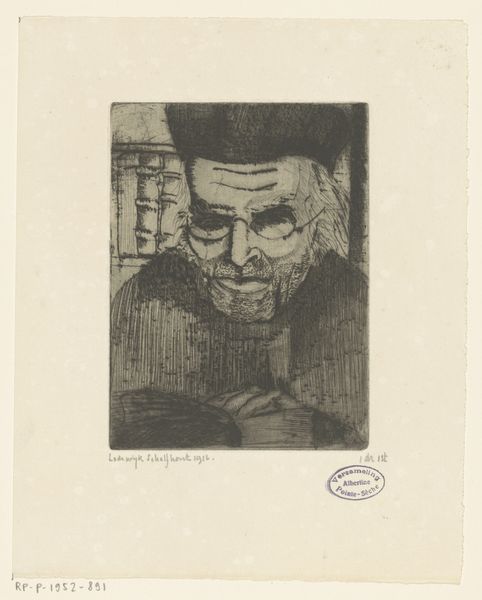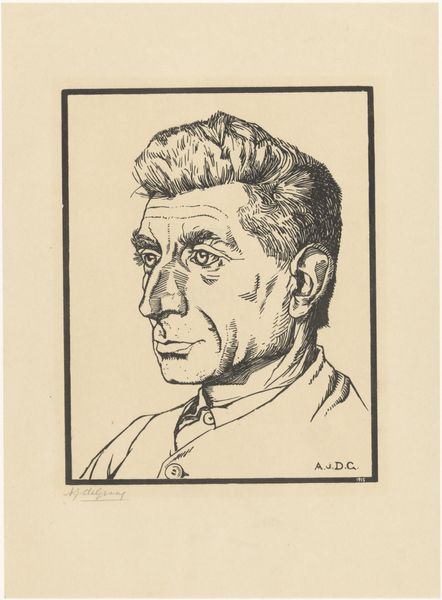
drawing, print, etching
#
portrait
#
pencil drawn
#
drawing
#
facial expression drawing
# print
#
etching
#
pencil sketch
#
charcoal drawing
#
charcoal art
#
portrait reference
#
pencil drawing
#
portrait drawing
#
portrait art
#
fine art portrait
#
realism
Dimensions: height 155 mm, width 145 mm
Copyright: Rijks Museum: Open Domain
Curator: We're now looking at Arend Hendrik’s 1933 etching, “Portrait of Paul van Alff.” It resides here in the Rijksmuseum. Editor: My immediate impression is of immense gravity; the heavy lines etched into the plate seem to weigh down the subject, creating a melancholic air. Curator: It’s difficult to divorce this image from the sociopolitical landscape of the 1930s. Van Alff’s world, and by extension Hendrik's, was teetering on the brink of immense societal change. That sense of anxiety seems to seep into the very lines of the portrait. Editor: I agree. The contrast is striking, look at the precise and cross-hatched lines creating areas of intense shadow and highlights. Observe, how they delineate the contours of his face and his almost haunting eyes and how his hand emerges on the foreground! Curator: His gaze is certainly captivating and laden with lived experience. His eyes seem to penetrate you and beckon a profound internal inquiry! It makes me think of the economic hardship that might have defined Paul Van Alff and his contemporaries in the Netherlands between the wars. Editor: True, however, I am more interested in how Hendrik has chosen to convey van Alff using the etching medium. The fine lines and granular textures lend an almost tactile quality. And by choosing this somewhat tonal, graphic way of describing light, van Alff almost seems more like a weathered sculpture, worn down over time by the elements. Curator: Exactly. The etching as a medium becomes almost symbolic of the erosion of stability that individuals experienced, creating an opportunity to highlight the human side of a tumultuous period. It becomes a profound statement of human resilience amidst precarity. Editor: Ultimately, it's how the formal aspects support the representation that interests me, with those harsh contrasts enhancing that feeling of unease you mentioned, allowing for a deeper emotional resonance. Curator: It’s interesting how Hendrik situates the sitter against the landscape, to broaden the scope of personal stories into wider communal ones; his gaze moves toward the outer world of the landscape. It's this subtle connection that I find compelling. Editor: Indeed, these subtle compositional decisions shape how we relate to the portrait, adding layers of meaning through carefully structured form and meticulous details. Curator: Thank you for pointing out the subtleties and power of realism captured with etching on paper. I have truly been transported back into the angst-filled times to experience Van Alff's inner world more closely.
Comments
No comments
Be the first to comment and join the conversation on the ultimate creative platform.
